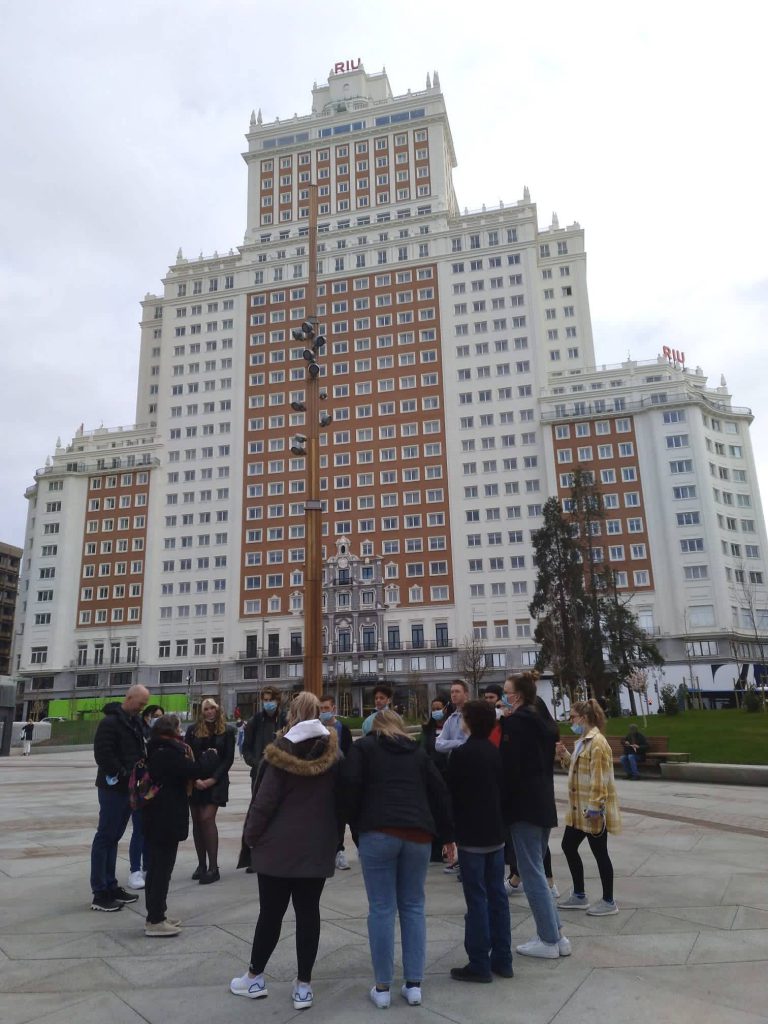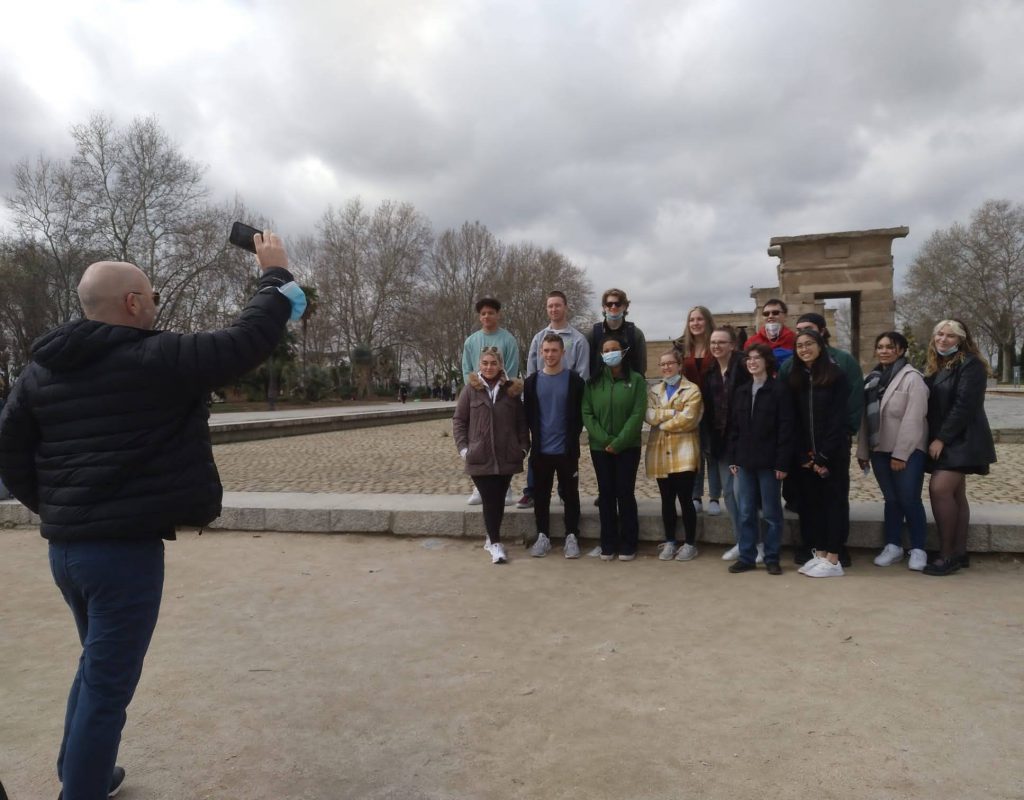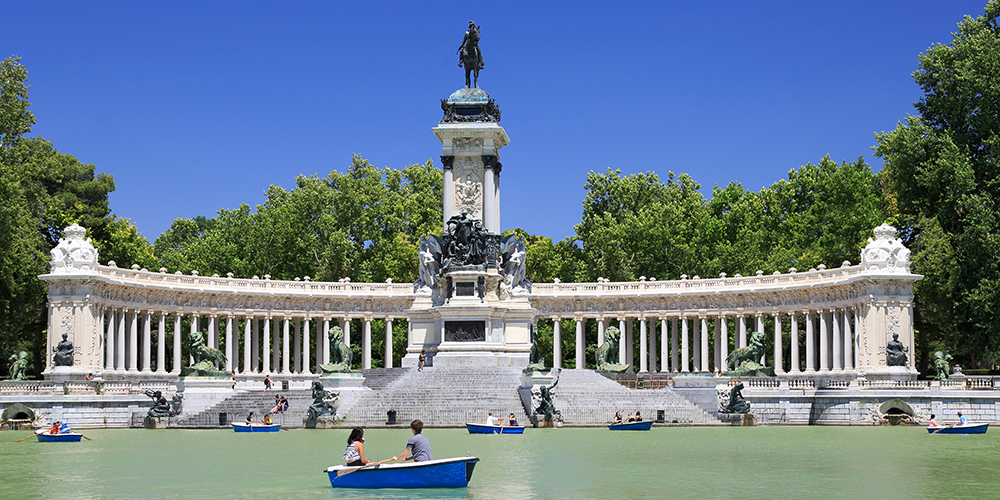Mindset for the Day
One of my biggest reasons for coming to Madrid was to learn about its history since I had limited knowledge prior to enrolling in this course. Fortunately, throughout the trip, I believe I have been able to develop a deeper understanding of the country’s history, and what makes Madrid the city that it is today. Additionally, because my family comes from the Dominican Republic, a former colony of Spain, I had an even greater interest in how the Spain of the past has affected both countries today. Therefore, I paid extra attention during Wednesday’s Spanish Civil War tour.
Visiting Plaza de España
After a short walk through Gran Via, the group arrived at
Plaza de España. There, our wonderful tour guide, Ana, proceeded to show us around the area while pointing out the historical buildings surrounding us. Two of the buildings mentioned included Edificio España and Torre de Madrid, which were built during Franco’s regime as a way to symbolize a time of prosperity for the country. Of course, Franco was a dictator and continues to be a very controversial figure, so this prosperity is full of dark moments.
We were also able to see the Monument to Miguel Cervantes, the iconic Spanish writer who wrote the world-famous novel Don Quijote. Additionally, Ana also explained the state of Spain before, during, and after the civil war. Although we had heard much of this information prior to the trip, physically being in the city where everything happened affected the way in which I viewed the war. The weight and impact of the war are felt with greater intensity here, unlike the distant way in which it is usually perceived in a classroom. Especially with the current war in Ukraine, the parallels and relevance are saddening and disturbing.

In front of Edificio España
Temple of Debod
Our tour then continued to Montaña Park. Something that stands out in the Montaña Park is the Egyptian Temple of Debod. As a dam was being built near this temple, the government decided that a way to protect the sites potentially affected by the construction was to gift them to other countries that assisted in preserving the temples. This is how the Temple of Debod ended up in Spain. It was erected stone by stone and in the same orientation as it was in Egypt. Something to note about the location of the temple is that this is where the Spanish uprising against Napoleon’s invasion occurred. This event is depicted in Francisco Goya’s painting The Third of May 1808. During the Civil War, it was used as army barracks.

Telefónica
Our day continued with a self-guided tour through the Telefónica museum. The Telefónica building was the first skyscraper in Spain and the tallest skyscraper in Europe for some time. Although we only spent a short time there, it was very interesting to see the progression of the means of communication used as well as other technology. This included typewriters and a variety of communication devices ranging from telegraphs to modern cellphones.
It was particularly interesting to know how Telefónica was used during the Civil War. Because it was the tallest building in Madrid, it was used as a bomb target by Franco’s army, while the Republican army used it as a military observatory.

Malasaña
After the planned portion of the day concluded, we had free time to venture on our own. Because the tour ended near Malasaña, a group of us decided to explore the neighborhood. We ate lunch near Plaza de San Idelfonso at a restaurant called Naif and then headed out to the vintage and thrift stores in the area. Thrift stores seem to be somewhat of a new trend here compared to the United States, as indicated by the higher prices. Luckily this past Sunday, a small group of us decided to go to El Rastro Flea Market in La Latina, where we were able to find many things we liked (e.g., jewelry, posters, magnets, souvenirs, etc.) at an affordable price.
Additionally, because it was siesta time, many of the stores were closed. Therefore, we decided to briefly stop by Gran Via and make our way back to the hotel. After that break, we had dinner at Mercado de San Idelfonso, which had many different types of food from other countries. Some of what I remember seeing included food from the Philippines, Korea, Mexico, Peru, etc. The food was fairly priced, and the outdoor seating was full of artwork. Something that I really appreciate about the city of Madrid is the variety of traditional Spanish food, as well as cuisine from other parts of the world. This makes me believe that although Spain may not be the imperial power it used to be, Madrid still has the essence of the capital of the world it once was.

